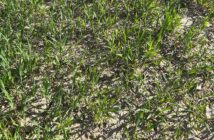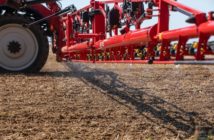As well as the threat from phoma, Oilseed rape growers are being urged to watch out for signs of light leaf spot (LLS) too.
While dry weather in August and September significantly delayed the onset of phoma, recent rainfall combined with mild temperatures means cases are likely to increase, says Hutchinsons head of integrated crop management, David Howard.
“If temperatures remain high, it will also increase the speed of transmission from the phoma leaf symptoms into the stem, causing the more damaging stem canker.”
This autumn’s delayed appearance of phoma means it is likely to coincide with the later light leaf spot timing, allowing growers to potentially tackle both diseases at once, David adds.
LLS risk has also been favoured by wetter conditions during October, although it generally prefers slightly cooler temperatures than phoma. “The optimum temperature for LLS is around 16 °C, so conditions over the last few weeks have been ideal for it.”
LLS is very difficult to manage curatively, so any varieties with a weakness to the disease (RL rating below 7) must be prioritised for protection with a suitable fungicide. Even a high resistance score does not offer complete protection, so those varieties may also benefit from early treatment, he advises.
“The choice of early fungicide should be based around varietal risk scores for both phoma and LLS and the growth regulatory requirement of the crop.”
Prothioconazole and tebuconazole based products, or bixafen plus prothioconazole formulations, generally offer the strongest control of phoma and LLS, while difenoconazole is a useful option against phoma where no PGR activity is required, he says.
“Given the level of variation in crop drilling date and size, PGR requirements will be different across farms and fields. Where crops are significantly advanced, the best approach is likely to utilise a dedicated growth regulator, such as mepiquat + metconazole, as this offers higher growth regulatory activity and timing flexibility, because you are not waiting for the crop’s disease control requirements.”
Large biomass crops (i.e. those with a GAI above 0.8 by the end of autumn) will be best managed with a sequenced PGR in autumn and spring, especially as long-term forecasts currently suggest a mild and wet winter, which may not slow down crop growth quickly, he notes.




